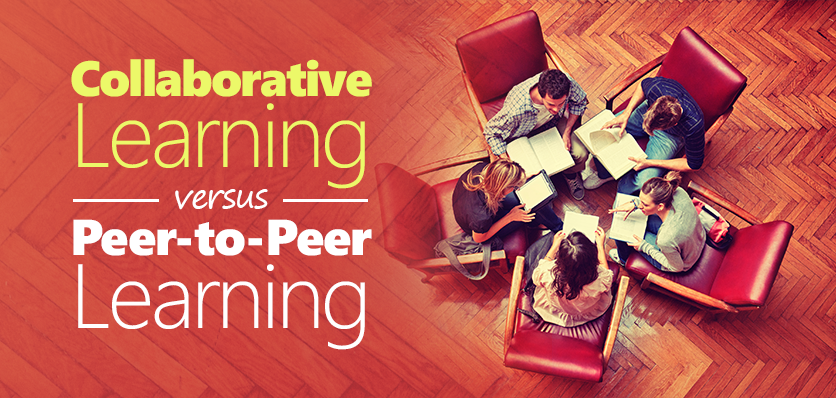
It’s misleading to see teachers as the only people students learn from during their educational journey. Students learn from each other too.Of course, this will always happen informally and spontaneously. But through techniques such as collaborative learning and peer-to-peer learning, it can also be a structured, full part of the classroom.
These two methods enable students to share and shape the learning process themselves, acting as participants and not just recipients.
And with new technologies making them even more invaluable, here’s our quick guide…
Collaborative learning is where students work in small groups to discuss concepts and find solutions to problems.
Peer-to-peer learning is where one student leads another through a concept, in which the first student is an ‘expert’ and the second is a novice. The peers don’t necessarily need to be from the same class or age group.
Collaborative learning is learning with each other.
Peer-to-peer learning is learning from each other.
This distinction is important. Because both techniques can, for example, mean a pair of students working together, it’s essential to understand what they should be doing differently for each.
They’re equally valid! They have different purposes and benefits, so you should use them in that context.
You might want to involve collaborative learning after introducing students to a concept (whether that’s them reading material or watching video before class, or a ‘kick-off’ lecture). Collaborative learning is based on the principle that ‘two (or more) heads are better than one’ in terms of then interrogating, understanding and absorbing that concept.
Students can discuss the material, and, together, take their comprehension a stage further. It’s also a good way for them to address misunderstandings and clarify misconceptions.
Collaborative learning can be anything from quick three-minute exercises to break up the classroom pace, to a complete semester/term-long working group.
We all know students learn at different paces, so encouraging the faster learners to help others is always a good idea. But peer-to-peer learning is helpful for both students: by explaining and presenting a concept, the ‘expert’ student takes their own understanding on a level, and develops their exposition skills.
Be proactive with peer-to-peer learning. Set up the session by preparing each student for their role, swop the roles each time and so on.
Across both techniques:
As with any exercise where students are (to an extent) ‘left to themselves’, a teacher needs to monitor the basics. For example: